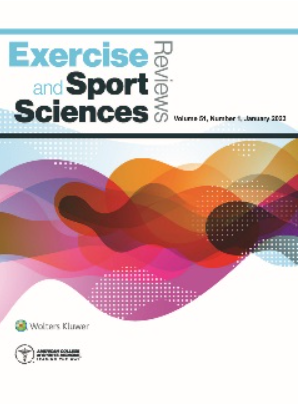血浆乳酸作为代谢健康的标志。
IF 4.7
2区 医学
Q1 PHYSIOLOGY
引用次数: 17
摘要
血乳酸浓度传统上被用作运动强度或临床高乳酸血症的指标。然而,最近的数据表明,空腹血浆乳酸也可以指示随后的代谢性疾病的风险。提出的假设是,空腹血乳酸积累反映了线粒体底物使用受损,这反过来影响代谢性疾病的风险。本文章由计算机程序翻译,如有差异,请以英文原文为准。
Plasma Lactate as a Marker for Metabolic Health.
Blood lactate concentrations traditionally have been used as an index of exercise intensity or clinical hyperlactatemia. However, more recent data suggest that fasting plasma lactate can also be indicative of the risk for subsequent metabolic disease. The hypothesis presented is that fasting blood lactate accumulation reflects impaired mitochondrial substrate use, which in turn influences metabolic disease risk.
求助全文
通过发布文献求助,成功后即可免费获取论文全文。
去求助
来源期刊

Exercise and Sport Sciences Reviews
社会科学-生理学
CiteScore
10.70
自引率
1.80%
发文量
72
期刊介绍:
Exercise and Sport Sciences Reviews made the transition from an annual hardcover series book to a quarterly journal in January 2000. The mission of this American College of Sports Medicine publication is to provide premier quarterly reviews of the most contemporary scientific, medical, and research-based topics emerging in the field of sports medicine and exercise science. The publication strives to provide the most relevant, topical information to students, professors, clinicians, scientists, and professionals for practical and research applications.
 求助内容:
求助内容: 应助结果提醒方式:
应助结果提醒方式:


